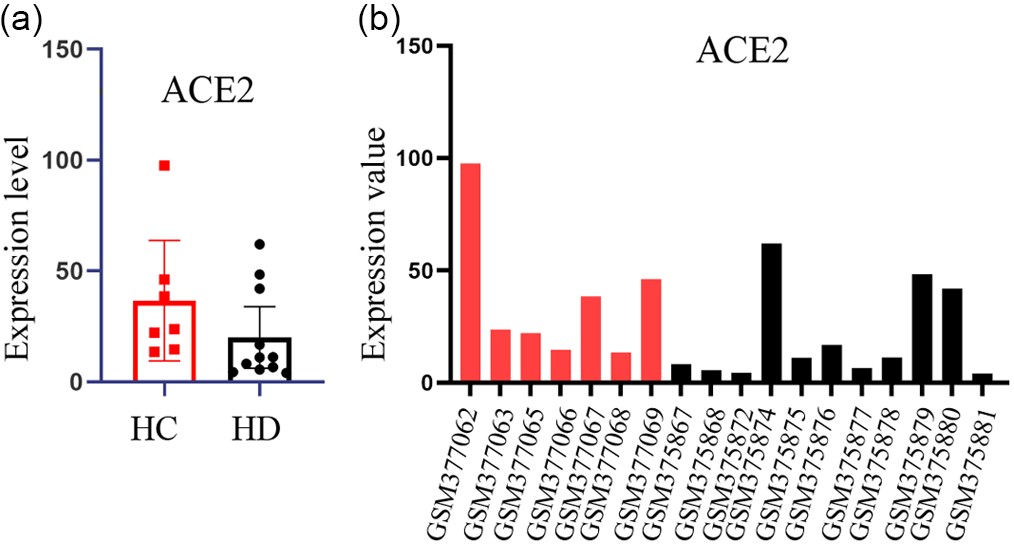The globe was struck by an outbreak of Coronavirus disease 2019 (COVID-19) since late December 2019. Previous research demonstrated that COVID-19 was related to the infection of a new type of Coronavirus—Severe Acute Respiratory Syndrome-Coronavirus-2 (SARS-CoV-2). Reference Chen, Zhou and Dong1 Epidemiologic statistics indicated the increased SARS-CoV-2 infectivity helped to drive the outbreak into epidemic proportions. The clinical characteristics of COVID-19 are strongly contagious, have obvious familial clustering, and middle-aged, and older males with underlying diseases are more susceptible. Familial aggregation is regarded as the dominating clinical characteristic, and familial epidemics accounted for 83% of cluster cases. 2 Therefore, tracking and managing familial epidemics will help to effectively control the spreading infection.
Here, an unusual clinical case of a high-risk patient free of SARS-CoV-2 cluster onset has attracted our attention. Specifically, a 74-year-old man with chronic renal failure on long-term dialysis went through a clinical observation where it was found that he was frequently exposed to the household epidemic (without any defensive measures). The patient was confirmed non-COVID positive after he went through 4 Nasopharyngeal swab tests and 3 chest Computerized Tomography (CT) scans. After analyzing the uncommon case, we speculate that Angiotensin-Converting Enzyme 2 (ACE2) is the crucial ingredient to explain the difference in incidence. Based on the result of molecular modeling, ACE2 is the same virus receptor shared between SARS-CoV-2 and SARS. Furthermore, research indicated the virus attaches to host cells via the surface spike glycoproteins (S proteins) to bind to human ACE2, which may play a major role in the entry of SARS-CoV-2 into human cells.
Low Expression Level of ACE2 in HD Patients
A few studies found that the expression of ACE2 decreased in patients at the end stage of hemodialysis (HD). Reference Malik and Raizada3 In order to verify the results, we used online microarray data of chronic kidney disease on HD from 18 specimens for verification (11 HD, 7 health controls). Data was analyzed by GEO2R (NCBI, Maryland, USA), and we found that the expression of ACE2 on HD tends to decrease when compared to the healthy control as shown in Figure 1. The patients with hemodialysis who avoid infection may be partially explained by low level of ACE2 caused by long-term regular hemodialysis.

Figure 1. ACE2 gene expression levels in hemodialysis patients and healthy controls.
Data of gene expression level of ACE2 from GSE15072 was analyzed by GEO2R online tools. (a) shows the expression level of ACE2 in hemodialysis patients and healthy controls while (b) shows the ACE2 expression value of each sample. The red column represents healthy control sample while the black represents the hemodialysis patient.
Heparin treatment in HD patients derivatives block SARS-CoV-2 binding to ACE2
The patient in this case was managed with long-term low molecular weight heparin, which is the most commonly-used anticoagulant during HD procedures. A recent experiment demonstrated that it can block SARS-CoV-2 binding to ACE2 and stop its entry into host cells. Reference Clausen, Sandoval and Spliid4 Heparan Sulfate Proteoglycan (HSPG) is essential to the interaction of spike protein and ACE2 as it allows initial contact between SARS-CoV-2 and host cells on the cell surface then binds to specific input receptor-ACE2. Heparin can shift the spike structure and prevent SARS-CoV-2 invasion. Accumulated evidence has confirmed that Heparin can inhibit the enzyme activity of Heparinase, thereby inhibiting viral export and spread. Reference Shi, Tingting and Li5 Besides, the anti-inflammatory function of heparin is noteworthy, which further explains the lesser severity of most COVID infections.
Patients with end-stage renal diseases on HD are a special group that lack sufficient research. We anticipate conducting further studies to confirm the hypothesis.
Author contributions
Chengping Wen, Qiao Wang, and Lin Huang conceived the study. Haichang Li and Lin Huang wrote the draft. Jiyong Huang and Jianfeng Bao contributed to collect the clinical data. All authors reviewed and approved the final version.
Funding statement
The research was supported by the Natural Science Foundation of Zhejiang Province’s “Emergency Prevention and Treatment of COVID-19,” under grant number: LEZ20H190001.
Competing interests
All authors declare no competing interests.
Ethical standards
We obtained written consent from the patients.



